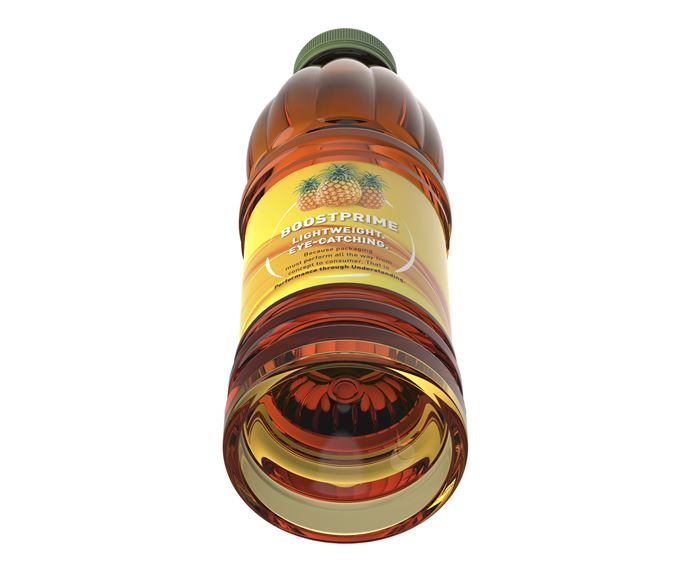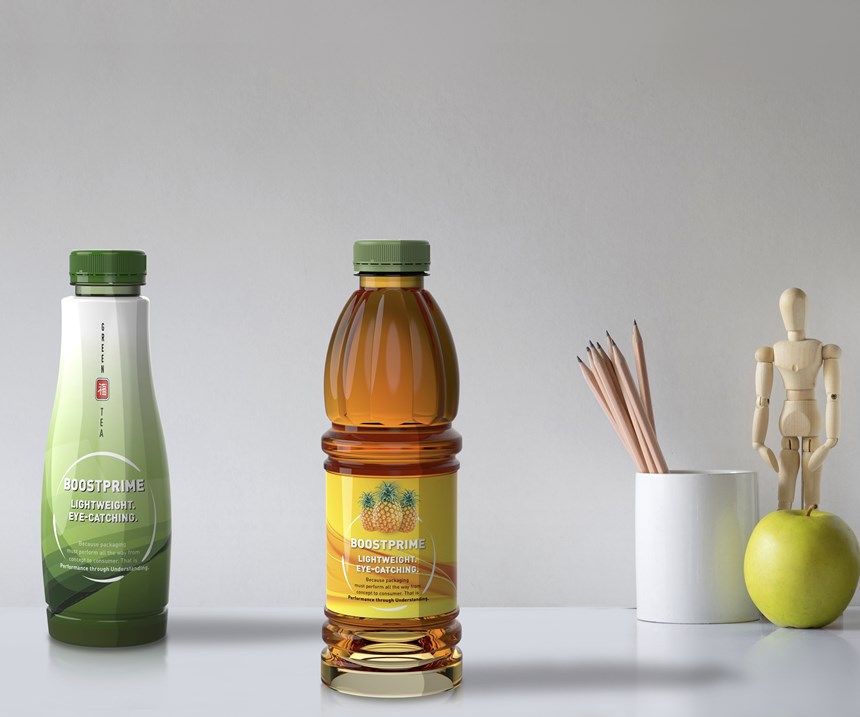Blow Molding: Base Inversion Adds Design Flexibility, Weight Savings for Hot-Fill PET Bottles
Sidel BoostPrime PET bottle designs make lighter hot-fill containers without vacuum panels or gas addition.
Weight savings and design flexibility that allows for “product premiumization” are promised by the new BoostPrime packaging solution for hot-fill PET bottles from Sidel. It removes the need for restrictive vacuum panels or gas addition to enable bottles to resist hot-filling temperatures up to 85-88 C. The patented solution is aimed at single-serve bottles of up to 1.2 L for juice, nectar, soft drinks, isotonics and tea (JNSDIT).
The final bottle shape is achieved with an “active base inversion” and relies on three key features that are said to have minor impact on the package production line layout:
• The package design requires specific base geometry and specifications.
• The Base Overstroke System (BOSS) allows mechanical forming of the bottle base during blowing.
• An inverter contributes to base inversion, which takes place after filling, capping, tilting and cooling and before labeling. It balances the negative pressure induced by beverage cooling in the bottle from filling to ambient temperature.
In addition, BoostPrime reportedly decreases the weight of current hot-fill bottles by up to 30%, or 3 to 7 g. It also allows producers to save as much as 90% on label material by switching from a sleeve to roll-fed operation. Payback for a new 1L hot-fill PET line can be as little as one year, Sidel says.
The first BoostPrime hot-fill lines are running in Mexico, where a customer has nearly 50 SKUs in production for juice, tea and isotonics. Bottle weight savings are up to 32% (for a 237-ml bottle).
Related Content
-
50 Years of Headlines … Almost
I was lucky to get an early look at many of the past half-century’s exciting developments in plastics. Here’s a selection.
-
Understanding the ‘Science’ of Color
And as with all sciences, there are fundamentals that must be considered to do color right. Here’s a helpful start.
-
Solve Four Common Problems in PET Stretch-Blow Molding
Here’s a quick guide to fixing four nettlesome problems in processing PET bottles.

















